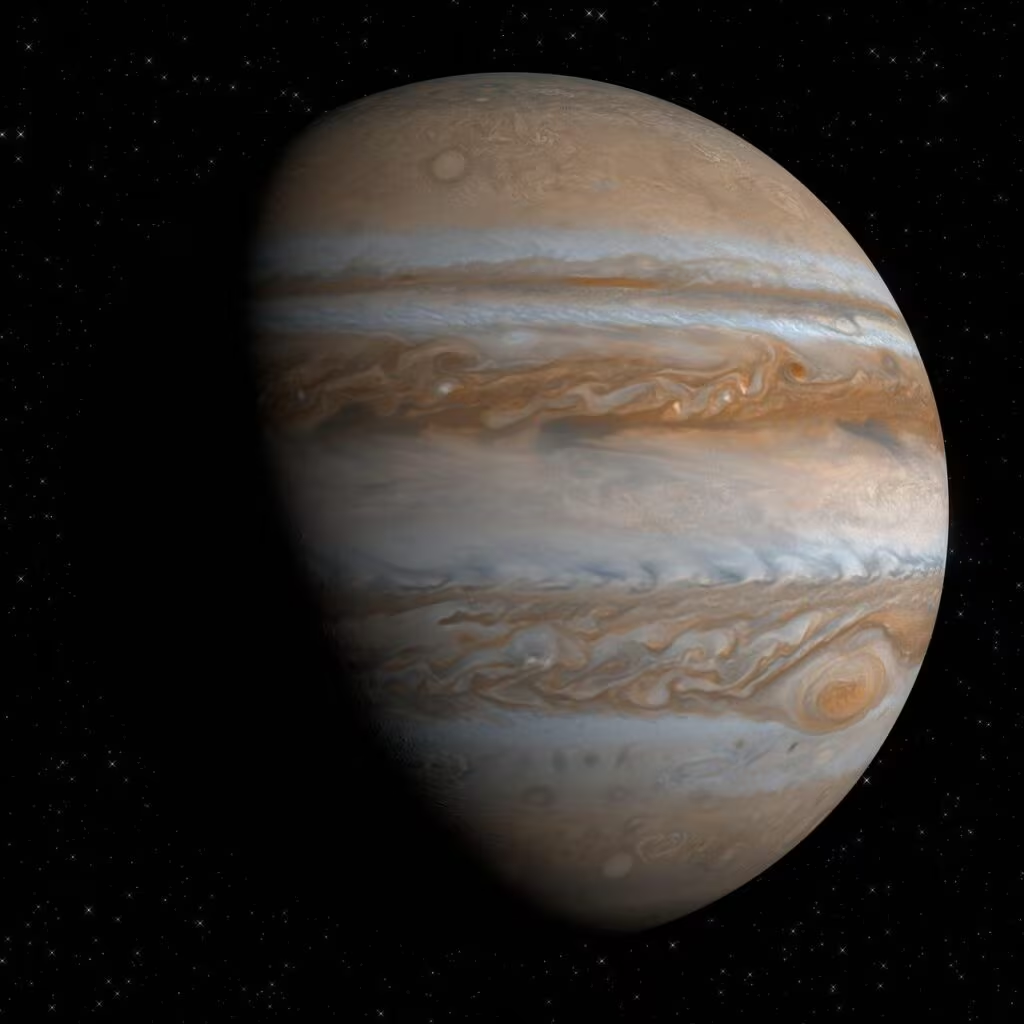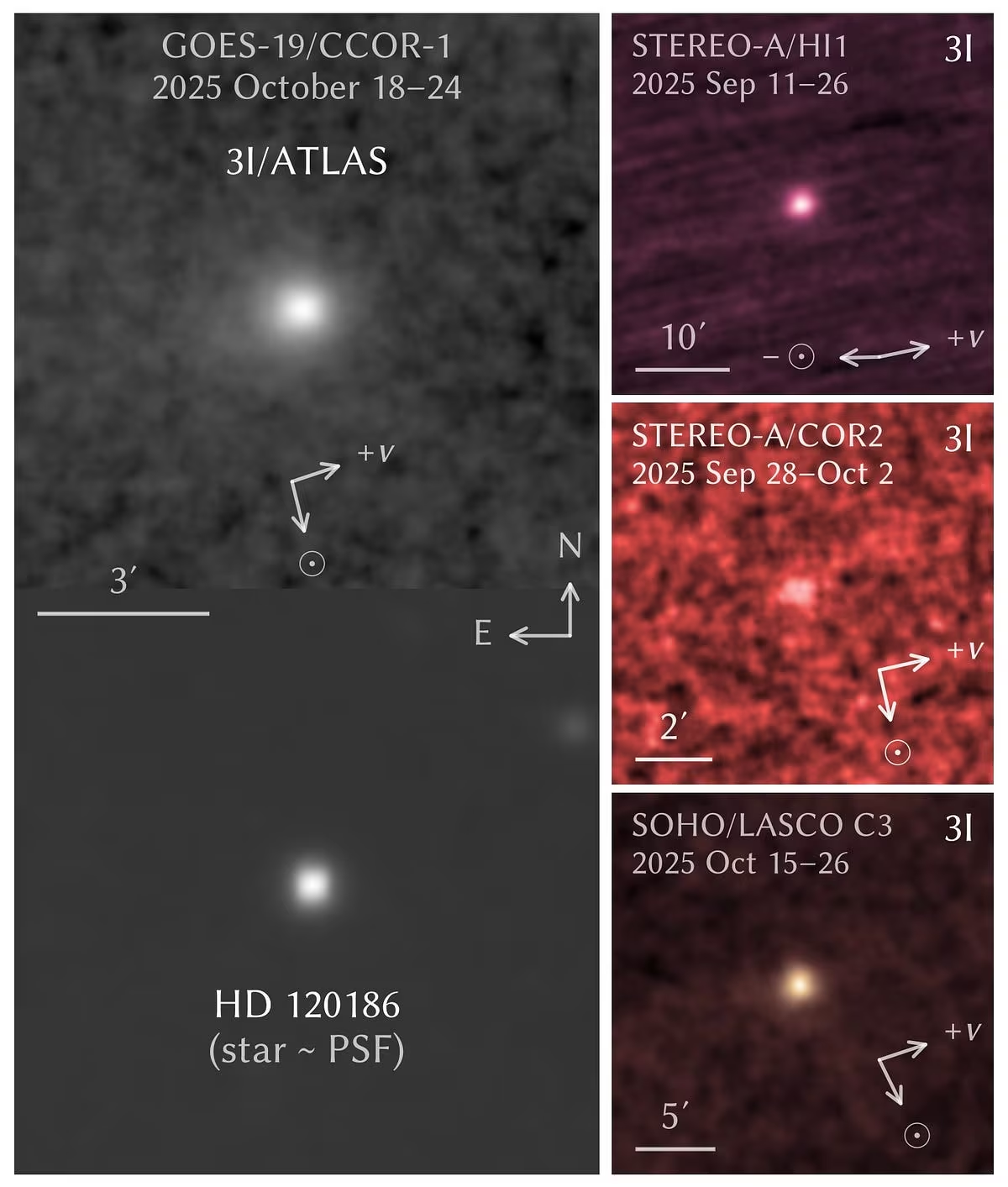Unprecedented Activity: Interstellar Object 3I/ATLAS Shows Cometary Behavior
New astronomical observations confirm that the interstellar object 3I/ATLAS exhibited dramatic activity as it approached its closest point to the Sun (perihelion). Data analyzed by researchers, including renowned Harvard astronomer Avi Loeb, revealed that the object rapidly brightened and underwent a significant color shift, becoming distinctly bluer than the Sun itself.
This behavior provides crucial insight into the composition of objects originating outside our solar system, strongly suggesting that 3I/ATLAS is a comet—a body composed primarily of volatile ices—rather than a solid asteroid.

The Observation: Rapid Brightening and the Blue Shift
The findings, based on data collected from various instruments, including stacked CCOR-1 frames, documented the object’s transformation as solar heating intensified. The key characteristics observed near perihelion were:
- Rapid Brightening: The object significantly increased in luminosity, a tell-tale sign of material being expelled from its surface.
- Color Change: 3I/ATLAS shifted its color index, appearing much bluer than the surrounding sunlight.
This blue color is scientifically significant. In astronomy, a bluer color typically indicates that the light being scattered or reflected is dominated by small dust particles or gas molecules rather than large grains. When a comet approaches the Sun, its ices (like water, carbon monoxide, or methane) sublimate—turning directly from solid to gas. This process releases a cloud of gas and fine dust, known as a coma, which efficiently scatters blue light.
Why the Color Change Matters
According to Dr. Avi Loeb, the rapid brightening and the blue color shift are definitive indicators of cometary activity. If 3I/ATLAS were a solid, rocky asteroid, its brightening would be gradual, primarily due to increased reflectivity as it turned, and its color would likely remain neutral or reddish, similar to typical solar system asteroids.
“The rapid brightening and the fact that 3I/ATLAS got bluer than the Sun near perihelion strongly suggest that it is a comet, driven by the sublimation of volatile materials,” noted Dr. Loeb in his analysis of the data.
The fact that the object became bluer than the Sun implies that the light observed was dominated by the emission of gas molecules (like cyanogen or diatomic carbon) or extremely fine, sub-micron-sized dust particles, which are characteristic products of icy sublimation.
Interstellar Context: Comparing 3I/ATLAS to ‘Oumuamua
3I/ATLAS is only the second confirmed interstellar object detected passing through our solar system, following the mysterious 1I/’Oumuamua in 2017. The ‘I’ designation confirms its interstellar origin. The object was discovered by the Asteroid Terrestrial-impact Last Alert System (ATLAS) survey, hence the name.
Key Differences Between Interstellar Visitors
While both objects originated outside our solar system, their observed behavior near the Sun suggests fundamental differences in their composition and activity:
| Feature | 1I/’Oumuamua (2017) | 3I/ATLAS (Observed Near Perihelion) |
|---|---|---|
| Activity | Non-gravitational acceleration observed; no visible coma/tail. | Rapid brightening; visible coma and blue color. |
| Shape/Appearance | Highly elongated, asteroid-like. | Cometary, exhibiting sublimation activity. |
| Classification | Debated (potentially rocky, or exotic ice body). | Strongly classified as a volatile-rich comet. |
‘Oumuamua’s lack of a visible coma, despite its non-gravitational acceleration, led to widespread speculation about its nature. In contrast, 3I/ATLAS has behaved exactly as expected for a typical, albeit interstellar, comet, providing astronomers with a clearer picture of the volatile materials present in other star systems.

The Significance of Volatile Interstellar Objects
The confirmation of 3I/ATLAS as a volatile-rich comet is vital for planetary science. Interstellar objects act as pristine samples of material ejected from other stellar systems. Studying their composition allows scientists to test theories about planet formation and the chemical environment around other stars.
What We Learn from 3I/ATLAS’s Activity:
- Chemical Consistency: The sublimation behavior suggests that the basic building blocks of comets—water ice and other volatiles—are common across the galaxy, similar to those found in the Kuiper Belt and Oort Cloud of our own solar system.
- Ejection Mechanisms: The existence of these objects confirms that stellar systems regularly eject material into interstellar space, likely through gravitational interactions with giant planets.
- Delivery of Materials: Interstellar comets could potentially deliver exotic materials, including organic molecules, to nascent planetary systems, influencing the potential for life.
This observation of 3I/ATLAS near perihelion provides a rare, direct measurement of the volatile content of an object formed in a distant stellar nursery. The blue color signature, driven by the release of fine material, is the physical evidence of this deep-space material reacting to the heat of our Sun.

Key Takeaways
The recent observations of 3I/ATLAS near its closest approach to the Sun offer definitive conclusions about its nature:
- Cometary Confirmation: The object is confirmed to be a comet, based on its rapid brightening and the formation of a volatile coma.
- Blue Light Signature: The shift to a color bluer than the Sun is caused by the efficient scattering of light by fine dust and gas released through sublimation.
- Interstellar Insight: 3I/ATLAS provides a clear example of a volatile-rich object ejected from another star system, contrasting sharply with the mysterious behavior of 1I/’Oumuamua.
- Scientific Value: Analysis of this activity helps astronomers understand the prevalence and composition of icy bodies throughout the Milky Way galaxy.
Conclusion
The dramatic transformation of 3I/ATLAS near perihelion serves as a powerful reminder that our solar system is constantly visited by material from beyond. The clear cometary activity observed—the rapid brightening and the distinct blue shift—resolves much of the ambiguity surrounding this specific interstellar visitor. This data is invaluable, confirming that 3I/ATLAS is a crucial piece of the puzzle in understanding how volatile materials are distributed and transported between star systems, reinforcing the interconnectedness of the galactic environment.
What’s Next
Astronomers will continue to analyze the spectral data collected during the perihelion passage to identify the specific volatile compounds being released by 3I/ATLAS. Future research will focus on modeling the object’s trajectory and origin system, using its confirmed cometary nature to refine theories on how such objects are ejected from their parent stars.
Original author: Avi Loeb
Originally published: October 30, 2025
Editorial note: Our team reviewed and enhanced this coverage with AI-assisted tools and human editing to add helpful context while preserving verified facts and quotations from the original source.
We encourage you to consult the publisher above for the complete report and to reach out if you spot inaccuracies or compliance concerns.

